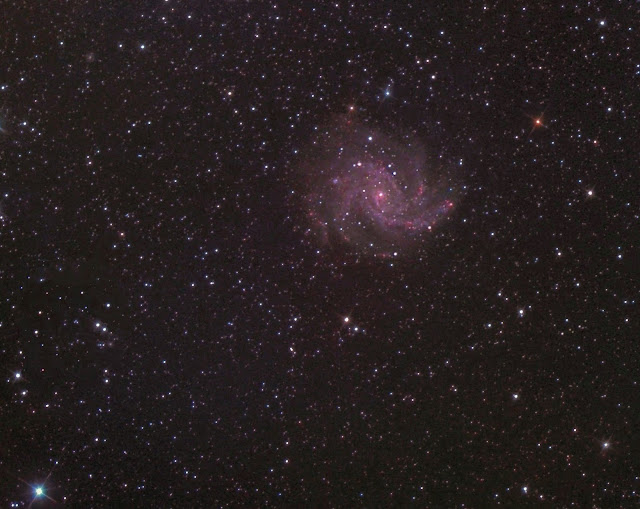M65, M66, and NGC3628. This group of galaxies lies in the constellation of Leo the Lion. I was using my 4 inch f/6.3 refractor, a Vixen Atlux mount, PHD auto guiding, an Atik 383L mono CCD camera and an IDAS light pollution filter for the luminance data. The colour data however was taken from an old image using RGB colour filters. I captured five minute sub frames with matching dark frames and combined them with flat field frames to reduce the effect of vignetting in the final image. Total exposure time was 60 min.
Click on the image to get a closer view
The Leo Triplet

































